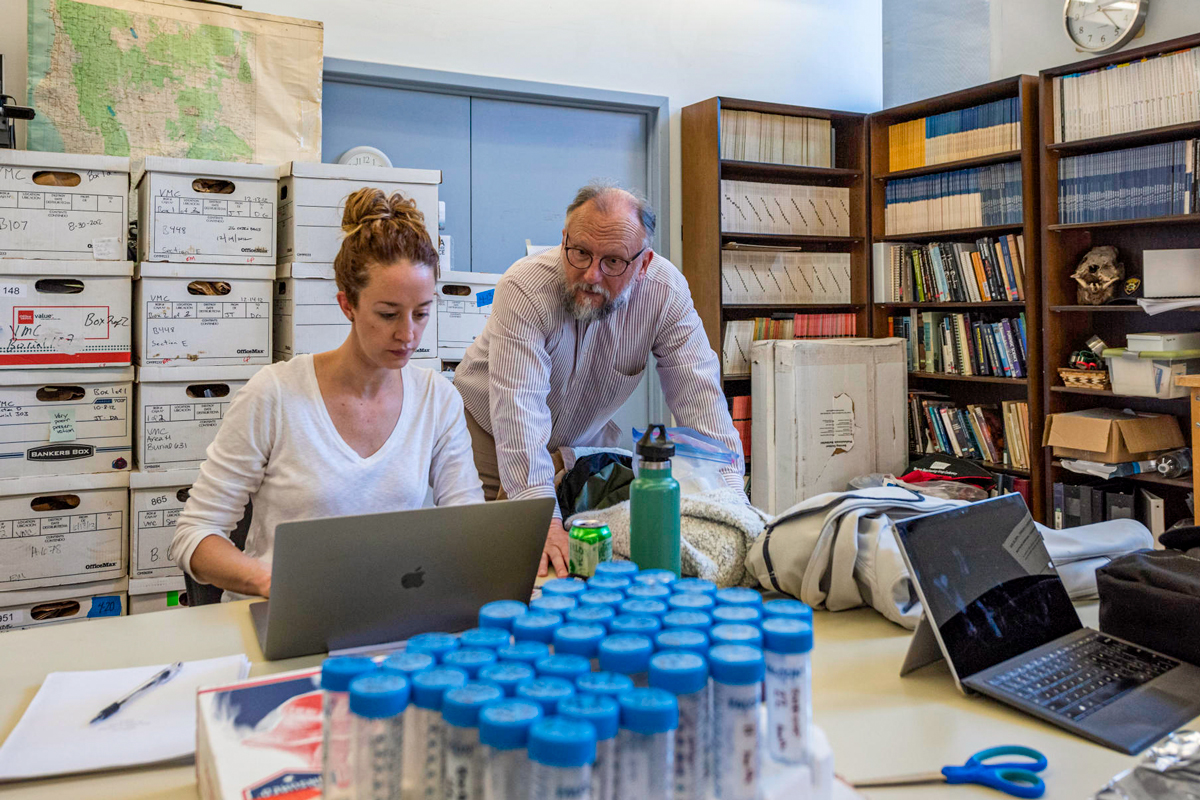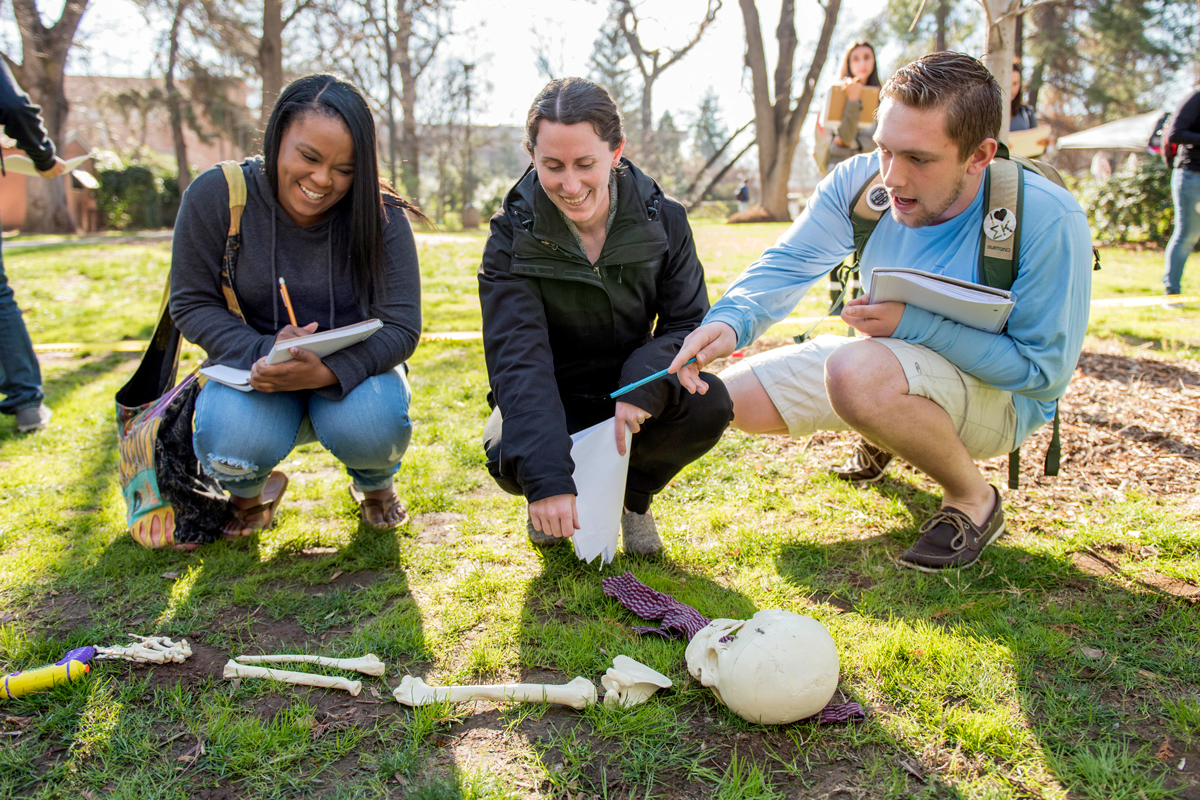Since its inception in 1974, the
Human Identification Lab (HIL) in
California State University, Chico’s Department of Anthropology has served an integral role in cases of missing persons, criminal investigations and mass fatality events. Currently working with 46 counties across California, the lab’s faculty team participates in recovery missions, helps identify recovered human remains and develops search and rescue methodologies. But it is also key to ensuring the state’s current and future professionals are effectively trained in the field.
“Across the country, we have an ever-increasing need for professionals who work in forensic science because of the value it brings to some of the hardest types of investigations,” says Colleen Milligan, Ph.D., HIL co-director and Department of Anthropology chair. “The remains that we have as casework tend to be some of the hardest conditions for getting identified. … So anytime you increase the forensic science workforce and increase the capabilities of the state to understand the advances in technology and methodology, you also reduce the number of unidentified victims, the number of unclaimed victims and the number of crimes that go unsolved and become cold cases.”

Professor Ashley Kendell, left, and Professor Emeritus P. Willey work in the Anthropology Department’s Human Identification Laboratory at Chico State.
As certified instructors for California’s Peace Officer Standards and Training (POST), the lab faculty assist in two-week homicide investigation courses across the state, largely for law enforcement and medical legal professionals.
But they also train both undergraduate and graduate students in forensic science. For undergraduates, the
Certificate in Forensic Science covers classroom learning in topics like biological sciences and the legal system. Students then get hands-on experience, usually reserved for when they enter the workforce, through a required internship. The program has placed students in the HIL, coroner offices, medical examiners offices, crime labs and law offices. “We craft their curriculum and training based on their interests and future career path goals,” says Ashley Kendell, Ph.D., Certificate in Forensic Science coordinator.
“A lot of times you're introduced to forensic science in a classroom environment, and you may have labs as part of a class, but everything is simulated,” Dr. Milligan adds. “When undergrads go through some of our coursework … we work real case examples into the curriculum, which gives them an idea of what this actually looks like. We use the actual crime scene materials and equipment they would encounter should they be hired for a crime scene position.”

Professor Colleen Milligan, center, points out details of a plastic skeleton to students while teaching her Survey Forensic Science class.
In addition, graduate students in forensics work on live cases in the HIL and deploy with the lab’s recovery teams. “They're stepping into investigations with us, and that is immensely valuable for their professional growth,” Milligan says.
Lastly, the HIL has expanded its role in helping the state respond to mass fatality events like wildfires since it proved an invaluable state resource for victim recovery following the 2018 Camp Fire. Since then, they’ve worked with the California Office of Emergency Services to discern how California can improve its response to future events and began conducting training for coroners and search and rescue groups.
“Butte County’s trust in our advice on how to respond to future fatalities has allowed us to improve collaborative responses,” Dr. Kendell says. “Integrating multiple agencies together improves efficiency, not only of recovery, but of the number of identifications that are made. … The closure we can bring for families and the information we can provide is unique.”
Milligan notes improvement was already seen during the 2020 North Complex Fire, as victims were recovered more quickly and were more likely to be identified within 24 hours. “That helps families, that helps the community and that helps resources come in to begin cleanup,” she says.